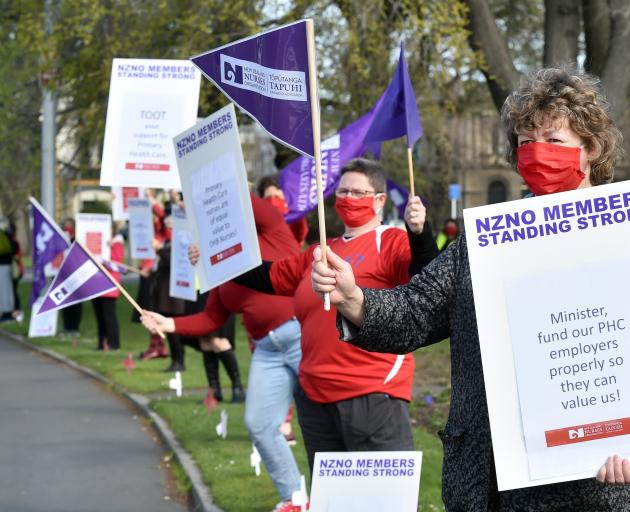
If it had been paying attention, however, it should not be surprised that many nurses and other healthcare workers within the 40,000 covered by the "agreement" are dissatisfied with the proposal which will not deliver the back pay they had expected.
The proposed settlement was reached in December last year, something the New Zealand Nurses Organisation and the Public Service Association had been negotiating with district health boards (DHBs) since 2018.
Nurses, who are the largest part of our health workforce, and highly unionised, have been the poor relation of the health system for years.
There has been difficulty retaining them in New Zealand because of the poor pay and that has had the flow-on effect to inadequate staffing where nurses have felt increasingly that they are having to practise in unsafe situations.
In a survey of 3366 frontline staff and 626 leadership staff, reported in the Nursing Safe Staffing Review and Report on the Review of the Care Capacity Demand Programme (CCDP) in February, more than 80% of both front-line nurses and those in leadership positions said patients in understaffed shifts were not receiving complete care.
Nearly two thirds of front-line nurses said that half or more of their past 10 shifts had been understaffed.
The CCDM system is supposed to identify nursing and midwifery staffing levels to ensure safety, but its implementation throughout the country has been slow, not helped by a lack of funding for gaps identified.
It is understandable nurses who have been hanging out for both improvements to safe staffing and proper recognition of their skills and importance to the health system through better pay, are balking at a proposal which would deny them previously promised back pay.

That advice was that there would be significant problems going to a ratification vote because of previous collective agreements which would oblige DHBs to back-pay the settlement to the end of 2019.
Not doing this would be contrary to the Equal Pay Act.
The difficulty for the union negotiators appeared to be that the Crown’s position was that if full back pay were given then the cost of that meant that new pay rates would be phased in over time. In that situation, and bearing in mind the current economic climate, they opted for higher pay rates now.
A $10,000 lump sum payment was part of the settlement, but the bulk of that had already been paid out in advance because of the slowness of the pay equity negotiations.
Some nurses have said the settlement as proposed would deny them more than $20,000.
Those affected by the proposed settlement are now being asked to decide whether to take the proposal forward for ratification or refer the matter to the Employment Relations Authority for it to make a determination on the full backdating claim. Voting will take place during the first week of May.
Health Minister Andrew Little has been making noises about there not being enough money for the full back pay, emphasising that the Government cannot undo decades of under-payment, but it can make sure nurses are paid fairly from now on.
Given the way the Government has been prepared to splash the cash in other areas, think tourism, for instance, this stance reflects little understanding of the depth of nurses’ dissatisfaction with their treatment over years.
Whatever the outcome of the May vote, we hope this matter can be resolved as speedily as possible. Nurses have waited long enough.












